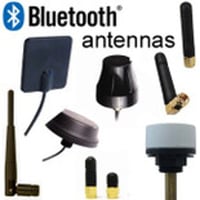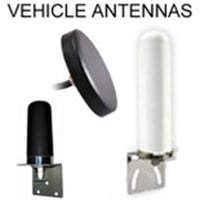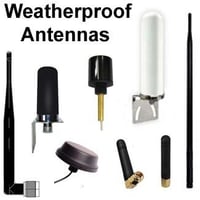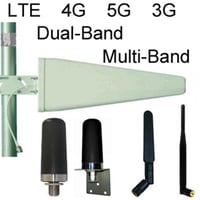WiFi Dual Band 2.4GHz 5GHz
Dual-Band Wi-Fi Antennas
Dual-band antennas are antennas that can operate at two distinct frequencies, providing the functionality of two antennas in a single unit. This selection of external antennas sends and receives signals in the 2.4 GHz or 5GHz frequency band. Depending on the model, the antennas use the frequencies individually or simultaneously.
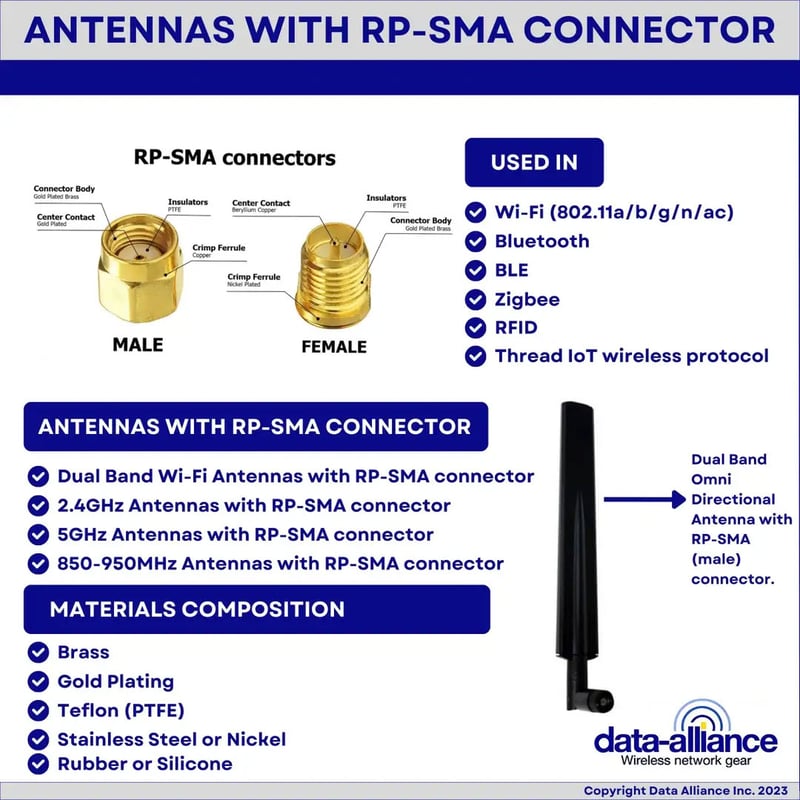
Dual-Band Antenna Elements
These antennas have multiple mono or dipole antenna elements. Each antenna element is resonant at the fundamental frequency of one or other of the two frequency bands. The antenna elements vary in length according to the wavelength of the frequency it is resonant for, keeping them distinct. As the 2.4 GHz and 5 GHz frequency bands are both above 1 GHz, the antenna element lengths are relatively short.
Technical Refinements
The antenna elements can also vary in bandwidth according to the thickness of the copper used in the antenna elements. To perform reliably, manufacturers engineer these elements to provide optimal resonance and phasing in each of their respective bands. They don’t center the antenna elements between the two bands as this would deliver suboptimal signal quality.
Dual-band antenna elements are also impedance matched (50 Ohm) and optimized for VSWR. The antenna elements may share a single feedline or the manufacturer may stack them as separate antennas and feedlines within a single radome.
Dual-band antennas are available in a range of formats
You can buy dual-band Wi-Fi antennas in a range of types and formats to suit any network application. Omnidirectional dual-band antennas provide all-around coverage and directional dual band antennas are available for wireless links. The main dual-band antenna types available include:
- Dual-band dipole antennas
- Articulating dual-band antennas
- i-Bar dual-band antennas
- Dual-band puck antennas
- Dual-band collinear antennas
- Panel dual-band WiFi antennas
The antennas also feature the leading types of antenna connector including RP-SMA, SMA, Type N, and U.FL connectors.
Benefits of dual-band antennas
These antennas are a high-utility solution for a variety of wireless networking arrangements. Here are the advantages of opting for a dual-band antenna rather than individual single-band antennas:
One antenna can access both frequencies
A dual-band antenna enables you to use a single antenna to access both frequency bands. This saves time and reduces cost and space requirements, especially if the number of connectors available on a wireless device is limited. Using a dual-band antenna ensures your devices can use both the 2.4 and 5 GHz frequency bands as required.
An external dual-band antenna can improve Wi-Fi performance
External antennas are routinely used to enhance the coverage that wireless networks can achieve. Dual-band routers are usually provided with antennas that have an antenna gain of less than 5 dBi. Connecting an external dual-band antenna with a higher gain (up to 9 dBi) is a simple way to improve the signal range and quality at each frequency.
The dual-band antenna not only boosts coverage but provides the option to transfer data on the frequency that has the least interference or congestion improving overall network performance. Most dual-band routers do this automatically. If your Wi-Fi supports the 5 GHz network, these antennas enable you to take advantage of the numerous non-overlapping channels at 5GHz for interference-free connectivity.
Dual-band antennas can support an increase in network throughput
Dual-band antennas are an effective solution for boosting network capacity. Use these antennas as part of enterprise networking arrangements that shuttle high-throughput data via wireless links at 5GHz while using the 2.4 GHz frequency band for routine wireless connectivity and internet access.
2.4 GHz to 5.8 GHz dual-band antennas are compatible with all versions of Wi-Fi
External dual-band antennas that are used for Wi-Fi can provide coverage from 2.4 GHz up to 5.8 GHz, spanning the two major frequency bands used by this wireless networking technology. This means that they can be used by all the major versions of the 802.11 protocol including:
- Wi-Fi 1 (802.11b)
- Wi-Fi 2 (802.11a)
- Wi-Fi 3 (802.11g)
- Wi-Fi 4 (802.11n)
- Wi-Fi 5 (802.11ac)
- Wi-Fi 6 (802.11ax)
They are also compatible with Wi-Fi 6E (which also uses 2.4 and 5 GHz), but cannot support the 6 GHz frequency band.
2.4 and 5 GHz Wi-Fi
The 2.5 and 5Ghz frequency bands are the major frequency bands used by Wi-Fi. They are unlicensed frequency bands that were originally designated for Industrial, Scientific, and Medical (ISM) and are free to use. They are used by a range of wireless networking applications but Wi-Fi is the most prevalent.
The 2.4 GHz frequency band
Frequency range: 2400 MHz to 2485 MHz
Number of Wi-Fi Channels (sub-bands): 14 overlapping channels that are 20 MHz wide. Channels 1 to 11 are used in the US and Channels 1 to 14 are available in Europe, Africa, and Asia.
This is the original frequency band used in Wi-Fi and the lower of the two frequency bands in a dual-band antenna. The 2.4 GHz frequency band is also used by other wireless technologies including ZigBee and Bluetooth, along with a wide range of cordless domestic devices.
Characteristics of the 2.4 GHz frequency band
The 2.4 GHz frequency band is favored for wireless networking because of the range and penetration it can achieve. It is preferable for multi-room coverage because it readily penetrates, timber, plaster, and insulation. In indoor environments, the 2.4 GHz signal loses less energy and is less weakened by obstructions than the 5 GHz frequency band.
However, the high utility of the frequency band has meant that it has become overloaded. The high volumes of wireless traffic that use this frequency band create interference, diminishing the performance of Wi-Fi network. Dual-band Wi-Fi was introduced as a solution to the problem of interference at 2.4 GHz.
The 5 GHz frequency band
Frequency range: 5.15 GHz to 5.35 GHz and 5.725 GHz to 5.825 GHz
Number of Wi-Fi Channels (sub-bands):4 large sub-bands with 26 channels (19 non-overlapping):
- A upper (indoor) spans 5.150 GHz to 5.250 GHz
- A lower (indoor) spans 5.250 GHz to 5.350 GHz
- B (indoor or outdoor) spans 5470 GHz to 5725 GHz
- C (outdoor waterproof) spans 5735 GHz to 5850 GHz
The Wi-Fi Alliance first introduced the 5 GHz frequency band for Wi-Fi networking in 1999. The 5 GHz frequency band introduces 19 non-overlapping channels (26 in total) for high-speed data transfer with no interference and minimal latency. The availability of bandwidth has led to the widespread adoption of this frequency band.
Characteristics of the 5 GHz frequency band
The 5 GHz signal has a much shorter wavelength or 6 centimeters which is half that of the 2.4 GHz signal. These high-frequency signals propagate primarily by direct line of sight as obstructions easily attenuate or reflect them. The shorter wavelength and easy attenuation limit the coverage of the Wi-Fi signal at 5 GHz. It usually cannot pass through walls, though within a single room it provides high speed, high throughput data transmission. If an outdoor weatherproof unobstructed fixed wireless link uses the 5 GHz frequency band, it can achieve greater coverage.


